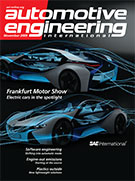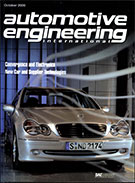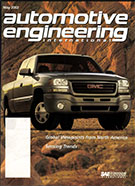Magazine

Autonomous Vehicle Engineering: September 2020
2020-09-03
Editorial AV lidar enters a new reality The Navigator UNECE takes first step toward AV regulation Special Delivery - by 'Bot Michigan start-up Refraction AI aims to be the go-to for last-mile, semi-autonomous, all-weather delivery robots. Lidar Infiltrates ADAS Once considered a necessity only in fully autonomous vehicles, lidar sensors are now being evaluated for lower-level driver-assistance systems. Training Data-hungry AI Algorithms Large-scale data refinement is key to bringing more sophisticated automated-driving functions to series production. Simulation's Next Generation Do autonomous-vehicle developers have their simulation strategies all wrong? Some experts think so - but suggest there's a practical solution. Marelli's COVID-killing HVAC Insert With big implications for shared mobility, a new photocatalytic cabin-air purifier claims to kill viruses - including COVID-19. Is Ground-penetrating Radar Next for AV Sensing?



















